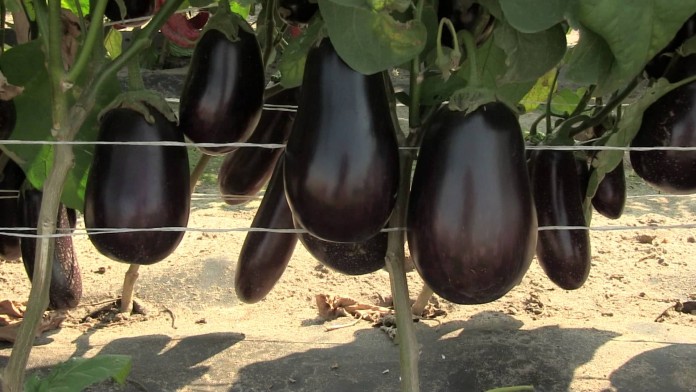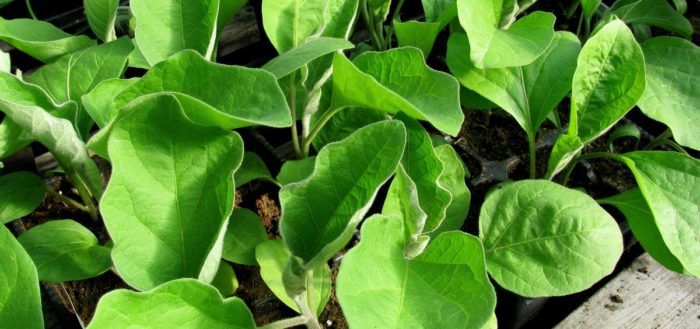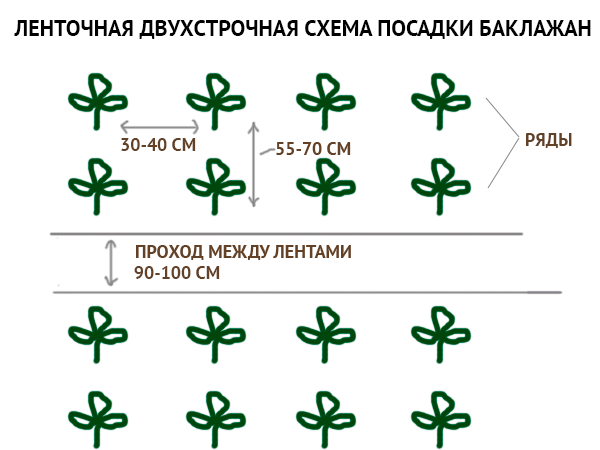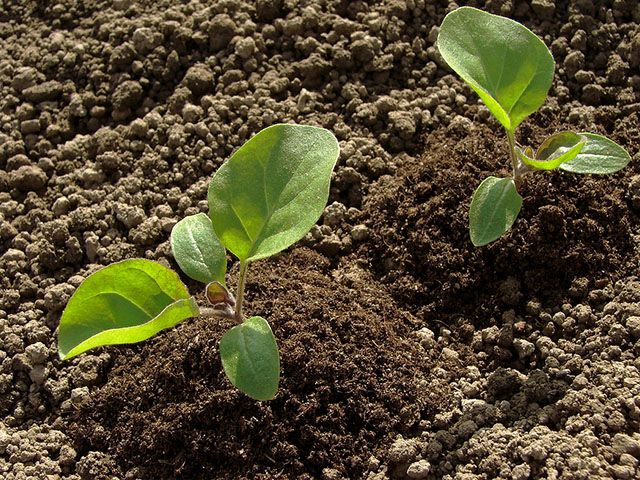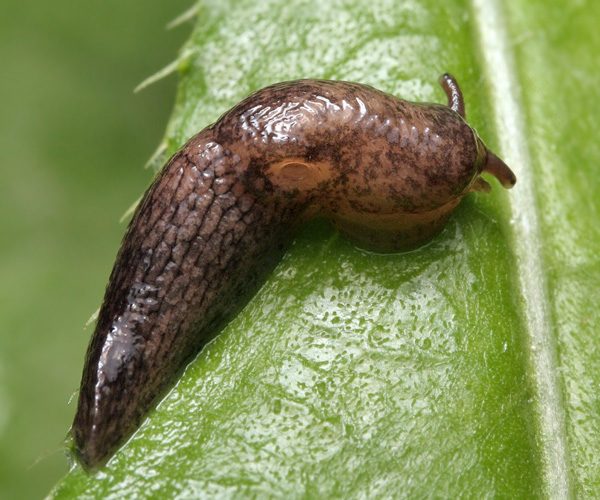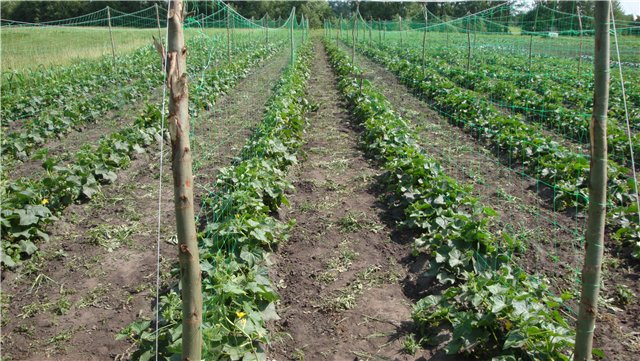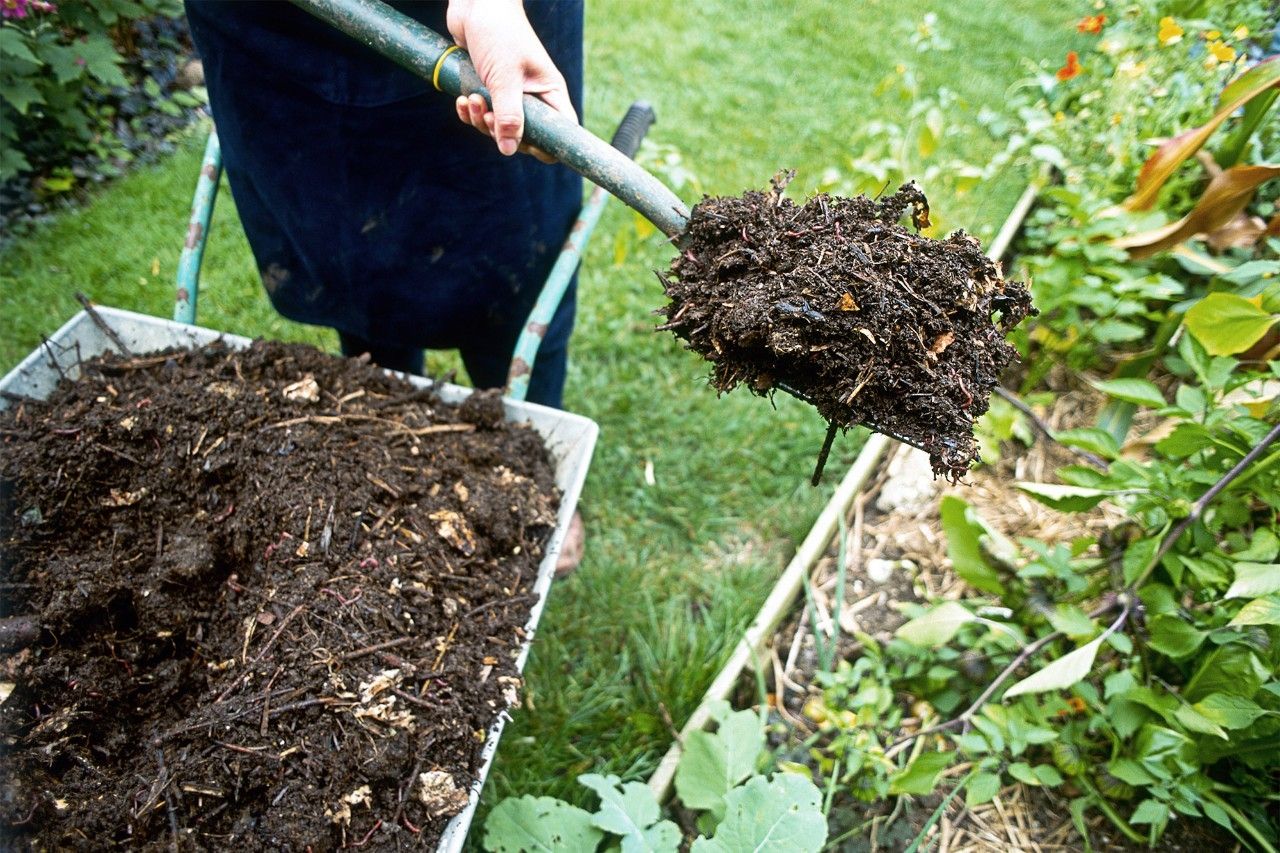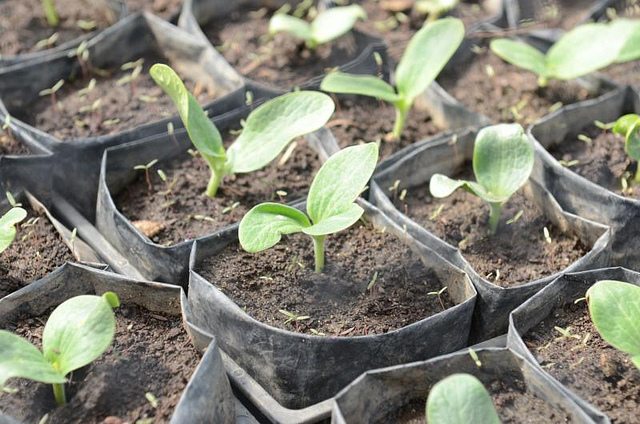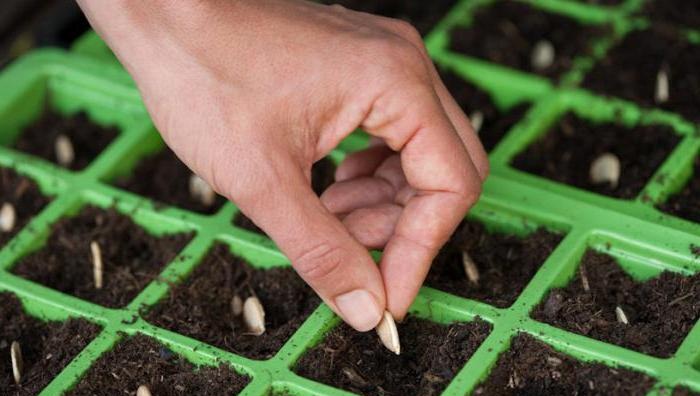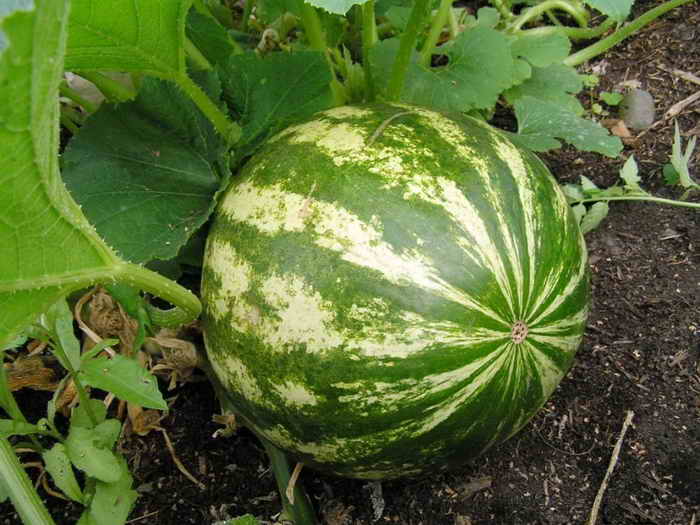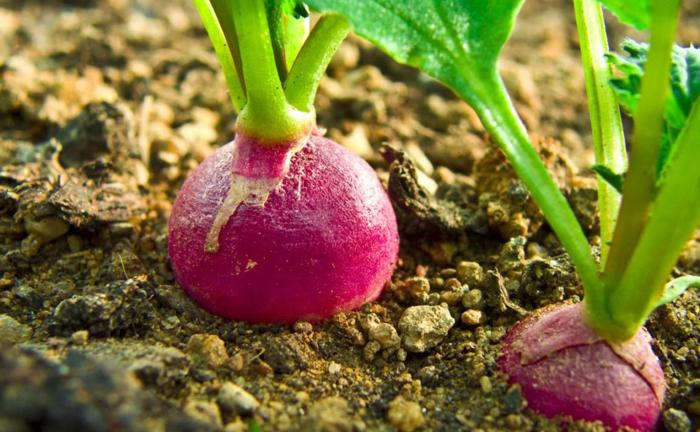Content:
Eggplant is a common crop grown in our country and around the world. Compliance with the agricultural technology of its cultivation will allow obtaining high-quality and good yields. It is necessary to know exactly all the intricacies of plant cultivation and know at what distance to plant eggplants, how to feed, how to water, etc.
Growing methods
Planting eggplants in open ground is carried out in two ways:
- seedling;
- seminal.
Each of them is used in certain climatic conditions. Having decided how to plant eggplants in open ground, you need to care for the plants accordingly.
Timing
When planting eggplants in seedlings, it is necessary to sow seeds in special containers or boxes in the second half of March. By the time the seedlings are transplanted into the open ground, they have already formed a relatively powerful root system and stem, forming about 3-5 leaves.
In open ground conditions, seedlings are transplanted in 2-3 decades of May. To establish a more accurate date, you need to focus on the air temperature at night, which should be more than + 18 ° C.
The transplant period must be calculated accurately, because at low temperatures the plants will not grow, and after frost they will die altogether. At the same time, overexposure of seedlings indoors or in a greenhouse can also be detrimental to them. The process must be completed before the beginning of the budding period. After the formation of ovaries, it becomes more difficult for plants to adapt to the renewed conditions, they are more damaged by pests and diseases.
Seedling method
Seed preparation
Optionally, seed hardening can be carried out before sowing. The seeds are placed in the vegetable compartment of the refrigerator for two days, then they are kept at a temperature of + 18 ° C for a day, and then they are again placed in the refrigerator for 2 days. Such a procedure will increase the level of winter hardiness and disease resistance, as well as increase the yield.
The seeds are then treated with nutrients for better growth. For this purpose, a liter of water is heated to a temperature of about + 25-28 ° C and a teaspoon of nitroammophoska is dissolved in it. The inoculum is soaked for a day in the resulting preparation.
Following this, they proceed to seed germination. They are moistened and placed in humid conditions and a temperature of + 30 ° C for 1-2 days. After that, unsprouted seeds are removed, as well as small, unfulfilled, deformed ones.
Sowing seedlings
The soil should be sufficiently loosened and fertile. The best option is a mixture of sand, turf and humus. It is also allowed to use ready-made soil mixture purchased from a special garden store.
The seeds are buried 5 mm into the ground at a distance of 2 cm from each other. Sprinkle them with soil, immediately irrigate with boiled or warm settled water. In the process of seedling growth, it will require regular watering and constant moisture.
Boxes with planted seeds are determined in a shaded place with an air temperature within + 22-25 ° С. Eggplants prefer warm conditions, so the temperature should not drop below + 15C so that the seedlings do not slow down their growth and development. After 1.5-2 weeks, the first green shoots form above the soil surface. During this period, it is necessary to rearrange the containers in places with diffused sunlight.
Lighting is important for seedlings, therefore, in the absence of natural light, it is allowed to use special lamps. Once a week, the plants must be fed. For this purpose, a spoonful of calcium nitrate is dissolved in a 10-liter container with water and the treatment is carried out together with irrigation.
To speed up the germination of seeds, it is recommended to cover the box with them with polycarbonate foil, creating a greenhouse for seedlings. In this case, it is necessary to regularly ventilate the plantings.
When the seedlings reach a height of 10 cm, and 5-7 leaves are formed on the plants, they begin to prepare for transplanting plants into open ground. One and a half to two weeks before this, the seedlings begin to harden, each day taking them out for several hours in the open air, so that they are not exposed to drafts and direct sunlight. First, the plants are hardened for a short period of time, but gradually they are raised.
Landing in open ground
For sowing, choose the evening or cloudy day. To determine at what distance to plant eggplants from each other, you need to take into account the early maturity of the variety. For early varieties, the interval in a row between the bushes is made equal to 25-30 cm, for middle and late varieties - 35-40 cm.According to the planting scheme, the row spacing should be 55-70 cm.
You should not plant seedlings densely. In such conditions, access to the sun's rays is difficult, ventilation deteriorates, and humidity rises. These are ideal conditions for the normal functioning of pathogens of various diseases (primarily fungal), as well as pests.
Sowing with seeds
A slightly less common way of growing eggplant is to plant seeds directly in open ground. In Russia, this method is justified only in the southern regions, but even under such conditions it is usually not possible to get an early harvest. To get fruit in the summer, you need to use only early varieties of seeds. This is due to the fact that even in the south, sowing seeds into the soil without shelter is not possible until May.
The soil is prepared in autumn: plant debris is removed, fertilized. In the spring, holes about 1 cm deep are made on the plot and spilled, then 3-4 seeds must be planted in each of them. As shoots appear, it is allowed to remove the weakest and most poorly formed ones. The option is also used when two seedlings are left in the holes. Further care of the plants is the same as with the seedling method.
Planting care
Watering and temperature conditions
After planting eggplants in the ground, they need regular irrigation.
1 m2 plantings need to be poured 10-15 liters of water.
Before flowering, watering is carried out every 3-7 days, depending on the degree of dryness of the topsoil. As flowering and fruiting, it is allowed to do with one irrigation per week, slightly increasing the volume of water.
The optimum temperature for the growth and development of a culture varies from 23 ° C to 26 ° C, overheating and freezing are equally harmful to eggplants. To protect planting from low temperatures, it is recommended to use agrotextile or film. On days with severe dryness, it is recommended to arrange a little shading to prevent scalding or drying out of the crop.
Loosening
To grow eggplants, the procedure is carried out weekly, preventing the soil from clumping. It is recommended to loosen the soil together with weeding from weeds.
The soil is loosened at a distance of about 10 cm from the plants. This distance is observed in order not to injure the roots. The procedure is carried out to a depth of 10-12 cm. As a result of loosening, the soil begins to warm up better, and the root system receives a larger amount of air necessary for it. During the growing season, hilling plantings is carried out four times in order to provoke the formation of adventitious roots.
Top dressing
Nutrient input is important for eggplants, even if grown in fertile soil. The first feeding is carried out two weeks after planting the seedlings in open ground. The following fertilizers are used:
- 30 g of carbamide and 50 g of superphosphate, diluted in 10 liters. water;
- chicken droppings;
- infusion of cow dung.
Fertilizers are applied a month later. The same substances and preparations are used, but their dosage is doubled.
The last feeding is carried out at the beginning of the fruiting phase. Before applying, the bushes are watered abundantly. Then, 80 g of superphosphate, 70 g of urea and 20 g of potassium chloride are dissolved in a 10-liter container with water. The resulting mixture is used for root processing, being careful not to get on the foliage, stem and shoots.
Pinching
When the shoot reaches a height of 30 cm, it is pinched, removing the upper part of the bush. Among the side shoots, 5-6 of the most healthy, fully formed and well-developed ones are distinguished and left, the rest must be removed. In a dry hot summer, pinching is not carried out.
Pest and disease control
The most dangerous pest of eggplant is the Colorado potato beetle. It appears on plantings in the first days after planting and immediately begins its wrecking activity, eating up shoots. He fights against it by using appropriate drugs (Aktara, Bankol, etc.), as well as dusting plantings with wood ash, flour with salt, wormwood infusion. Larvae and adult insects can be collected by hand and destroyed.
Against spider mites and bugs, the preparations Fitosporin, Zircon, Prestige, etc. are used. Treatment of plants with infusion of dandelion or onion, where you need to add a little laundry soap, is effective.
Other dangerous eggplant pests include:
- slugs;
- bear;
- whitefly;
- aphid.
To destroy them, plantings are sprayed with insecticides. Slaked lime and ash must be placed in the aisles.
The most dangerous diseases of eggplant include:
- blackleg;
- late blight;
- black bacterial spot;
- mosaic.
Black leg and late blight are fungal diseases that are treated by treatment with appropriate fungicides. For preventive purposes, it is recommended not to allow excessive moisture in the plot.
To counteract black spot and other bacterial ailments, it is more important to adhere to agricultural technology (crop rotation, soil disinfection, removal of plant residues).Mosaic and other viral diseases usually do not respond to treatment; diseased plants are destroyed. Before planting, seeds should be placed in a 20% hydrochloric acid solution for half an hour, and then rinsed under running water. Inventory, containers and other equipment are subject to mandatory disinfection. It is necessary to constantly monitor how the eggplant grows and whether symptoms of ailments appear on it.
Harvest
When determining the maturity of an eggplant, one should focus on the early maturity of the variety and the period of fruit formation:
- early - 90-110 days;
- average - 115-130 days;
- in the late ones - 130-140 days.
In eggplants in the open field, the timing can vary in different directions, which is caused by the weather, cultivation conditions, agricultural technology, etc. Other signs of ripeness include the length of the vegetable. Color may vary during different growing phases, so it is not considered an indicator of maturity.
The fruits are removed along with the stalk using a garden pruner. It is important to finish harvesting before the cold weather sets in. If soon the temperature should drop to negative values, and the fruits have not ripened, careful digging of the bush and transplanting it into a greenhouse will be correct. The harvested crop is stored for about a month in a room with a low temperature.
The eggplant cultivation process is quite long and laborious. The work can be made easier by knowing how to plant and cultivate eggplants. At the end of the season, the work will be well rewarded.
